The pour-over method, with its deliberate ritual and nuanced flavors, has become a cornerstone of the modern coffee experience. But with so many beans available, finding the right coffee for your pour-over can feel overwhelming. This guide dives into the art of pour-over brewing, providing expert insights and practical tips to help you brew the perfect cup.
Understanding the Pour-Over Method
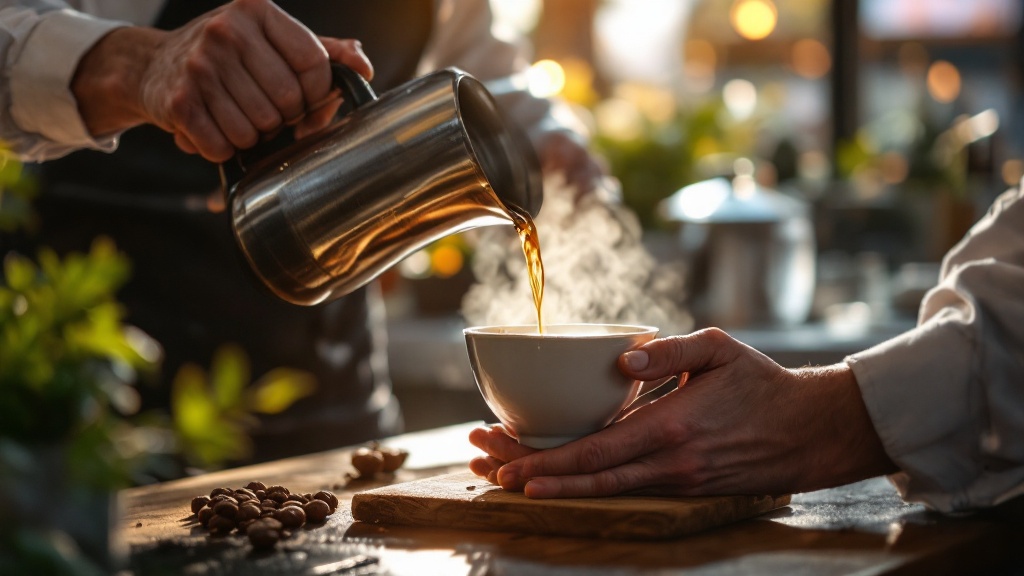
Pour-over brewing is more than just a method; it’s an exploration of coffee’s potential. By manually controlling the water flow and temperature, you have the power to unlock a spectrum of flavors hidden within the beans. This method, dating back to the early 20th century with Melitta Bentz’s invention of the paper filter, has evolved significantly. It reached new heights of precision with the introduction of the Hario V60 in 2004, its cone shape and spiral ridges optimizing water flow for a more even extraction.
Unlike automatic drip machines, pour-over grants you complete control. You dictate the grind size, water temperature, and pour rate, allowing you to tailor the extraction to your specific beans and taste preferences. This meticulous approach allows you to highlight subtle nuances in single-origin coffees and fully appreciate the complexity of specialty coffee beans.
The key components of a successful pour-over are quality coffee beans, precise grind size, appropriate water temperature, controlled pouring technique, and the chosen filter. Mastering these elements is essential to achieving a balanced and flavorful cup.
Bloom Optimization Techniques
The bloom, the initial saturation of the coffee grounds with hot water, is a critical stage in pour-over brewing significantly impacting extraction efficiency and overall cup quality. Proper blooming allows for degassing of carbon dioxide (CO2) trapped within the grounds, preventing channeling and ensuring a more even extraction throughout the brewing process. The ideal bloom time is generally between 30-45 seconds, but this can vary depending on several factors, including the bean’s roast level, grind size, and altitude. Darker roasts, often having less trapped CO2, may require shorter bloom times, while lighter roasts benefit from longer durations to fully release volatile compounds.
- Water temperature impacts bloom; aim for 200-205°F (93-96°C) for optimal extraction.
- Observe the bloom: A good bloom will show even saturation, with minimal dry grounds remaining.
- Grind size is crucial; too coarse leads to uneven saturation, while too fine hinders degassing.
- Consider using a scale to ensure a consistent coffee-to-water ratio during blooming.
- Experiment with bloom times based on bean origin and roast level to find your ideal sweet spot.
| Key Aspect | Bloom Time | Water Temp | Grind Size |
|---|---|---|---|
| Bloom Optimization | 30-45 seconds | 200-205°F (93-96°C) | Medium-fine |
Choosing the Right Beans: Single-Origin vs. Blends
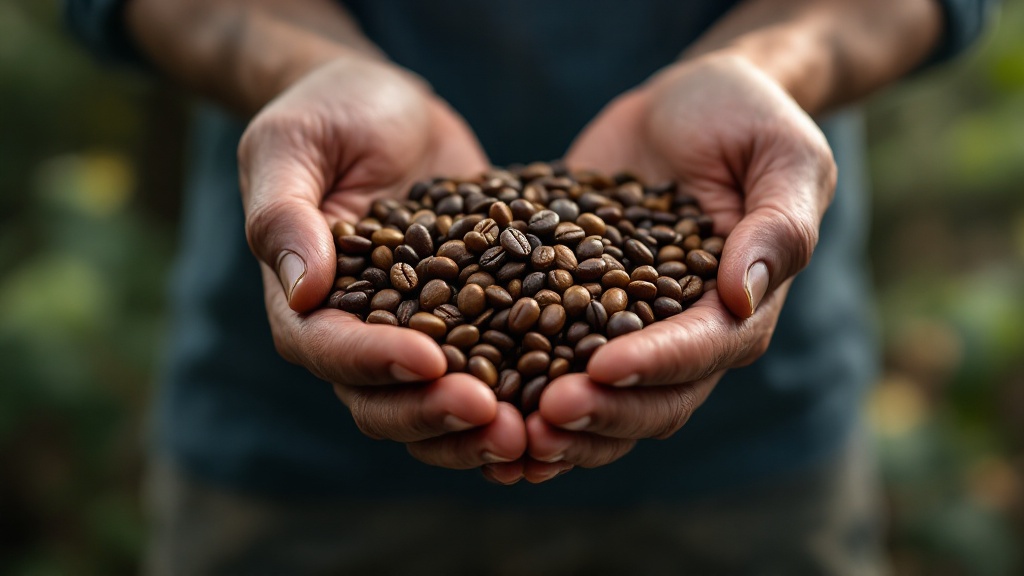
The world of coffee beans is vast and diverse, offering a spectrum of flavors from bright and fruity to earthy and chocolatey. For pour-over, both single-origin and blended coffees offer distinct advantages. Single-origin coffees, sourced from a specific region or farm, showcase the unique terroir of their origin. These beans often possess distinct flavor profiles that reflect the climate, soil, and processing methods of their environment.
For example, a Kenyan coffee might exhibit bright acidity and black currant notes, while a Sumatran coffee may offer earthy and herbal undertones. Pour-over brewing allows these nuanced flavors to shine. Blends, on the other hand, combine beans from different origins to create a balanced and complex cup. A skilled roaster can craft a blend that highlights the best attributes of each bean, resulting in a consistent and satisfying brew.
Consider your personal preference when choosing between single-origin and blends. If you enjoy exploring distinct flavor profiles, single-origin coffees are an excellent choice. If you prefer a more balanced and consistent cup, a well-crafted blend might be more suitable. Expert roasters like Tim Wendelboe champion the use of single-origin coffees in pour-over to appreciate the unique terroir-driven characteristics.
Pour-Over Extraction Variables
The pour-over brewing method’s sensitivity to bean characteristics necessitates a nuanced understanding of extraction variables. Single-origin coffees, with their inherent varietal and terroir-driven differences in bean density, porosity, and chemical composition (e.g., differing levels of lipids and sugars), directly influence the optimal grind size and water-to-coffee ratio for ideal extraction. A densely structured Sumatran Mandheling, for example, might require a coarser grind and a slightly lower water-to-coffee ratio (e.g., 1:15 instead of 1:16) to avoid over-extraction and bitterness, compared to a lighter-bodied Ethiopian Yirgacheffe which may benefit from a finer grind and a higher ratio to fully extract its bright acidity and delicate floral aromatics. This necessitates precise adjustments based on the specific bean’s characteristics and the desired flavor profile.
- Water temperature significantly impacts extraction; slightly cooler water (e.g., 195-205°F) can help prevent bitterness in dense beans.
- Bloom time is crucial; a proper bloom allows for degassing and even saturation, improving extraction consistency.
- Grind size adjustments should be incremental to fine-tune extraction; even small changes (e.g., one click on a burr grinder) can have noticeable effects.
- Pouring technique affects extraction uniformity; slow, even pours minimize channeling and maximize contact with grounds.
- Bean age and storage conditions influence extraction; older beans may require adjustments to achieve desired results.
Grind Size, Water Temperature, and Brewing Ratio
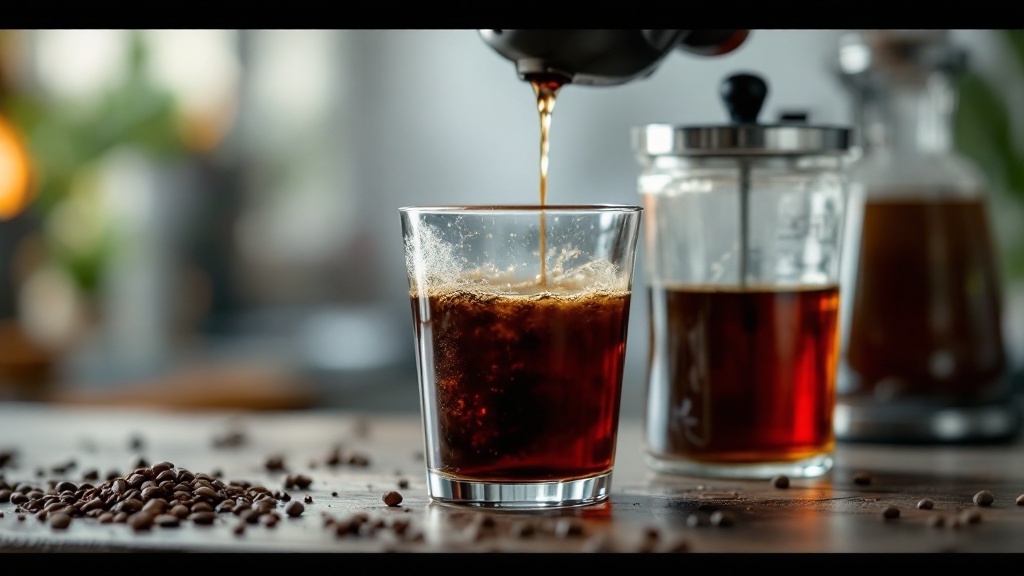
Precision is paramount in pour-over brewing. The grind size, water temperature, and coffee-to-water ratio directly impact the final flavor of your cup. A medium-fine grind, similar to table salt, is generally recommended for pour-over. This grind size allows for optimal extraction without over-extracting the coffee, resulting in a balanced and nuanced cup.
Water temperature also plays a crucial role. The Specialty Coffee Association (SCA) recommends a temperature between 195°F and 205°F (90°C-96°C). Using water outside of this range can lead to under-extraction or over-extraction, negatively impacting the flavor. Investing in a gooseneck kettle with precise temperature control, such as the Fellow Stagg EKG, allows for consistent and optimal brewing.
The coffee-to-water ratio is another critical factor. A standard ratio of 1:16 (e.g., 20g of coffee to 320g of water) is often used as a starting point, but this can be adjusted based on personal preference and the specific coffee beans. Precise measurements are essential for consistency. A digital scale, like the Acaia Pearl, is a valuable tool for achieving repeatable results.
Optimal Water Extraction Temperature
The ideal water temperature for pour-over brewing significantly impacts the extraction yield and, consequently, the final cup’s flavor profile. The Specialty Coffee Association (SCA) recommends a range of 90-96°C (195-205°F). However, achieving and maintaining this precise temperature throughout the brewing process requires careful consideration of several factors. Initial water temperature from the heating source is crucial; a pre-heated gooseneck kettle, such as the Fellow Stagg EKG+, ensures consistent temperature stability, minimizing fluctuations that can lead to uneven extraction. Furthermore, the kettle’s pouring technique influences the final water temperature reaching the coffee bed. A slow, controlled pour minimizes thermal shock and allows for even saturation, maximizing soluble compounds’ extraction. Using a thermometer, such as the ThermoWorks Thermapen ONE, during the bloom and subsequent pours provides real-time feedback, enabling immediate adjustments to maintain the target temperature range.
- Altitude affects boiling point; adjust target temperature accordingly (higher altitude requires higher starting temperature).
- Water hardness impacts extraction; softer water may require slightly higher temperatures.
- Coffee bean roast level influences ideal temperature; lighter roasts often benefit from slightly lower temperatures.
- Using a calibrated thermometer is crucial for accurate measurements and temperature adjustments during the brewing process.
- Pre-infusion (bloom) temperature should be slightly lower (around 88-92°C) to gently awaken the coffee grounds before the main pour.
- Room temperature also plays a role; a cooler environment may require a slightly higher starting water temperature to compensate for heat loss.
The Art of the Pour: Technique and Timing
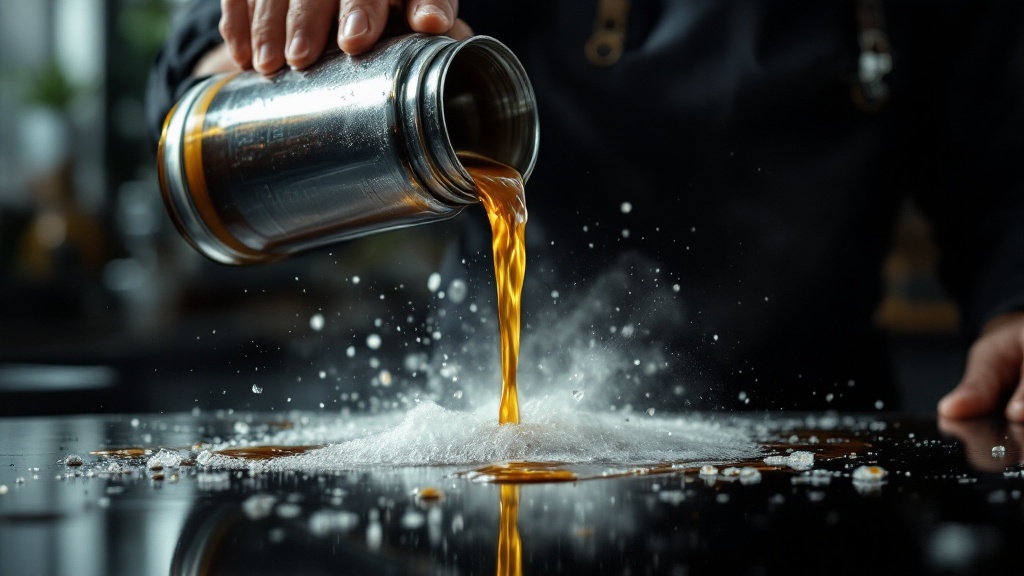
The pouring technique itself is a delicate art form in pour-over brewing. A slow, steady, and controlled pour is crucial for even extraction. World Barista Champion Scott Rao emphasizes the importance of a consistent pour to avoid channeling, where water takes the path of least resistance through the coffee bed, resulting in uneven extraction.
Begin by blooming the grounds with a small amount of hot water, allowing the coffee to degas and release trapped carbon dioxide. This crucial step prepares the coffee for even extraction. After the bloom, continue pouring in slow, concentric circles, starting from the center and moving outwards. Maintaining a consistent water level throughout the brewing process is essential for optimal extraction.
The entire brew time for pour-over typically ranges from 2.5 to 4 minutes, depending on the brewing device and grind size. Using a timer helps ensure consistency and allows you to fine-tune your technique based on the specific coffee you’re brewing. Practicing your pouring technique and observing the extraction process are essential steps in mastering the art of pour-over.
Bloom Optimization for Even Extraction
The bloom, a crucial initial step in pour-over brewing, significantly impacts the final cup’s quality. Its primary function is to degas the coffee grounds, releasing trapped carbon dioxide (CO2). This CO2, if not properly released, can impede water penetration, leading to channeling. Channeling, a common brewing fault, causes uneven extraction as the water follows paths of least resistance through the coffee bed, resulting in under-extracted and over-extracted sections. An improperly executed bloom can lead to a sour, astringent, or bitter cup.
- Bloom time generally lasts 30-45 seconds, allowing sufficient CO2 release.
- The ideal bloom ratio is typically 2x the coffee grounds’ weight in water (e.g., 20g coffee : 40g water).
- Gentle agitation during the bloom helps ensure even saturation and CO2 expulsion.
- Insufficient blooming can lead to a sour or under-extracted taste profile.
- Over-blooming can result in a muted or flat coffee flavor.
- Observe the bloom; a good bloom will result in a gentle, even expansion of the grounds.
Exploring Different Pour-Over Devices
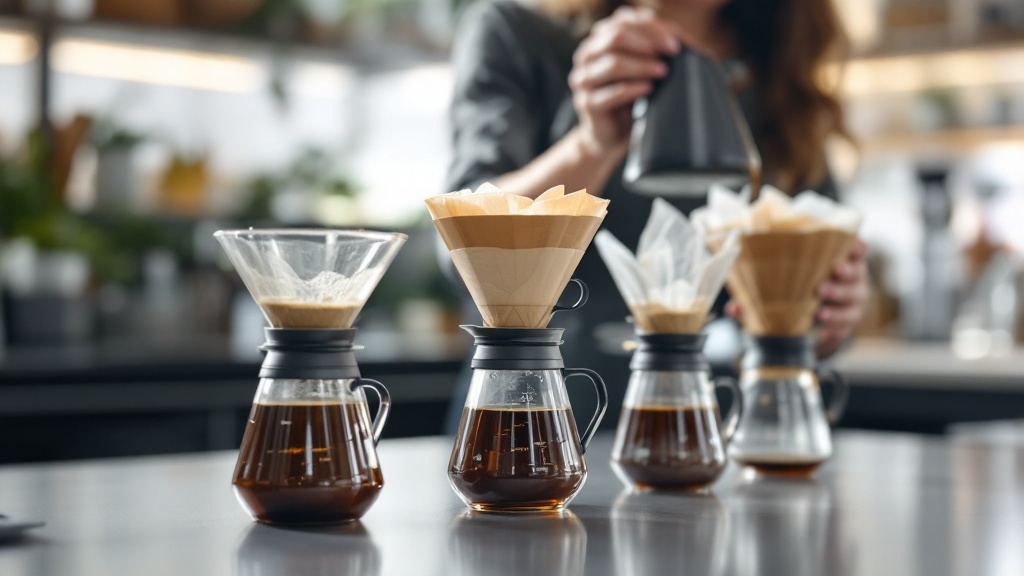
The market offers a variety of pour-over devices, each with its own unique characteristics. The Hario V60, with its cone shape and spiral ridges, produces a bright and clean cup. The Chemex, known for its elegant design and thick paper filters, yields a smooth and full-bodied brew. The Kalita Wave, with its flat-bottom design, offers a more forgiving brewing experience and a balanced cup.
Each device has its nuances and requires slight adjustments in technique. Experimenting with different devices allows you to discover which one best suits your preferences and the specific characteristics of the coffee you’re brewing. From classic devices to innovative options like the Ratio Six and Breville Precision Brewer, which automate aspects of the pour-over process while maintaining manual control, there is a perfect device for every coffee enthusiast.
Plus, the choice of filter also plays a role. Paper filters, metal filters, and cloth filters each impact the final flavor profile. Paper filters produce a cleaner cup, while metal and cloth filters allow more oils and sediments to pass through, resulting in a richer, more textured brew. Reusable metal and cloth filters are gaining popularity as eco-friendly alternatives to disposable paper filters.
Pour-Over Filter Paper Selection
The choice of filter paper significantly impacts the final cup of pour-over coffee, influencing both extraction yield and the resulting flavor profile. Paper filters, available in various grades and materials, primarily serve to remove sediment and particulate matter from the brewed coffee. Different filter paper thicknesses directly influence the permeability of the filter bed and the rate of water flow through it. Thinner filters (e.g., Hario V60 #00 size filters) offer faster filtration, allowing more soluble compounds to be extracted, often resulting in a brighter, more acidic cup with enhanced clarity. Conversely, thicker filters (e.g., Chemex filters), due to their slower filtration rate, allow for a gentler extraction, yielding a smoother, more full-bodied brew with potentially more nuanced flavor notes but potentially less brightness. This difference is primarily attributed to the variance in contact time between the water and the coffee grounds during the extraction process.
- Paper type influences taste: bleached papers can impart a slight papery taste, while unbleached offer a more neutral profile.
- Consider the grind size: Finer grinds require slower filtering papers to prevent sediment breakthrough.
- Filter shape matters: Cone filters (e.g., V60) vs. flat-bottom filters (e.g., Chemex) create different flow dynamics.
- Experimentation is key: Find the best paper type for your preferred brew method and coffee bean.
- Cost varies: Higher quality or specialty papers often come with a higher price tag, reflecting the material and manufacturing processes.
Conclusion: Embracing the Pour-Over Journey
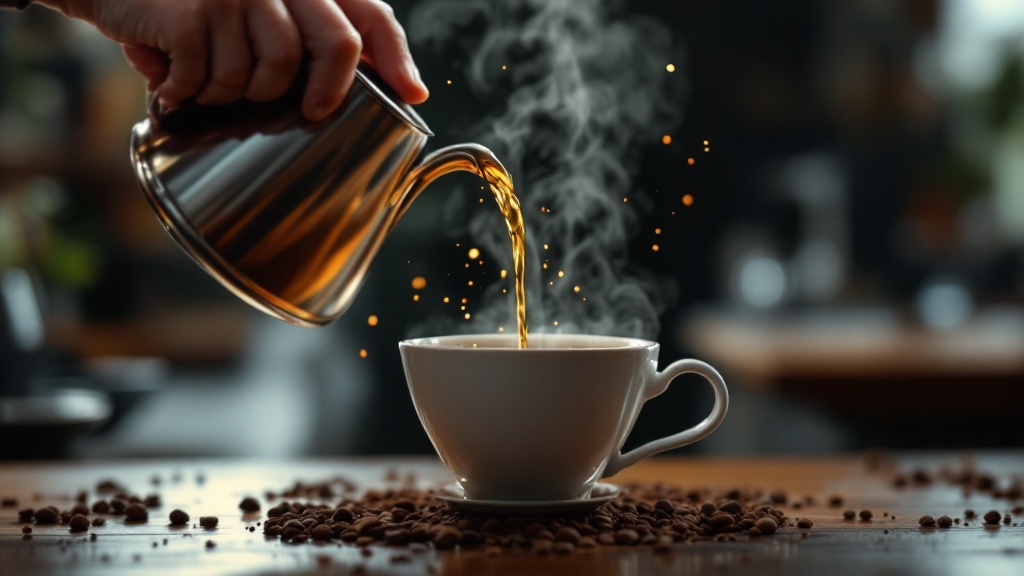
Pour-over brewing is a rewarding journey of discovery. By understanding the nuances of bean selection, grind size, water temperature, brewing technique, and equipment, you can unlock the full potential of your coffee. From the bloom to the final drop, each step in the pour-over process offers an opportunity to refine your craft and savor the complexities of specialty coffee.
Whether you’re a seasoned barista or a home brewing enthusiast, the pursuit of the perfect cup is an ongoing exploration. Embrace the process, experiment with different variables, and discover the unique flavors that await you in the world of pour-over coffee. Remember, the best coffee for pour-over is ultimately the one that delights your palate and elevates your coffee ritual.
Bloom Optimization Techniques
The bloom stage, the initial saturation of the coffee grounds with hot water, is critical for even extraction and unlocking the coffee’s full aromatic potential. Optimal bloom involves a gentle, even saturation of the grounds, ensuring all particles are adequately hydrated before the main pour begins. This process typically involves a ratio of approximately 1:1.5 to 1:2 of water to coffee grounds by weight, poured slowly and evenly over the grounds to ensure complete saturation. Insufficient bloom can result in under-extraction, yielding a sour, weak cup. Conversely, an overly aggressive bloom can lead to over-extraction, producing a bitter, astringent brew.
- Bloom time generally lasts 30-45 seconds, allowing for even saturation.
- Observe the grounds; they should be evenly moistened without channeling.
- A coarser grind size can improve bloom consistency, reducing clumping.
- Using filtered water minimizes mineral interference and enhances extraction.
- Experiment with bloom water temperature; slightly lower temps can reduce bitterness.
| Key Aspect | Bloom Ratio | Bloom Time | Bloom Tips |
|---|---|---|---|
| Bloom Optimization | 1:1.5 to 1:2 (water to coffee) | 30-45 seconds | Use coarser grind, filtered water, lower temps |

